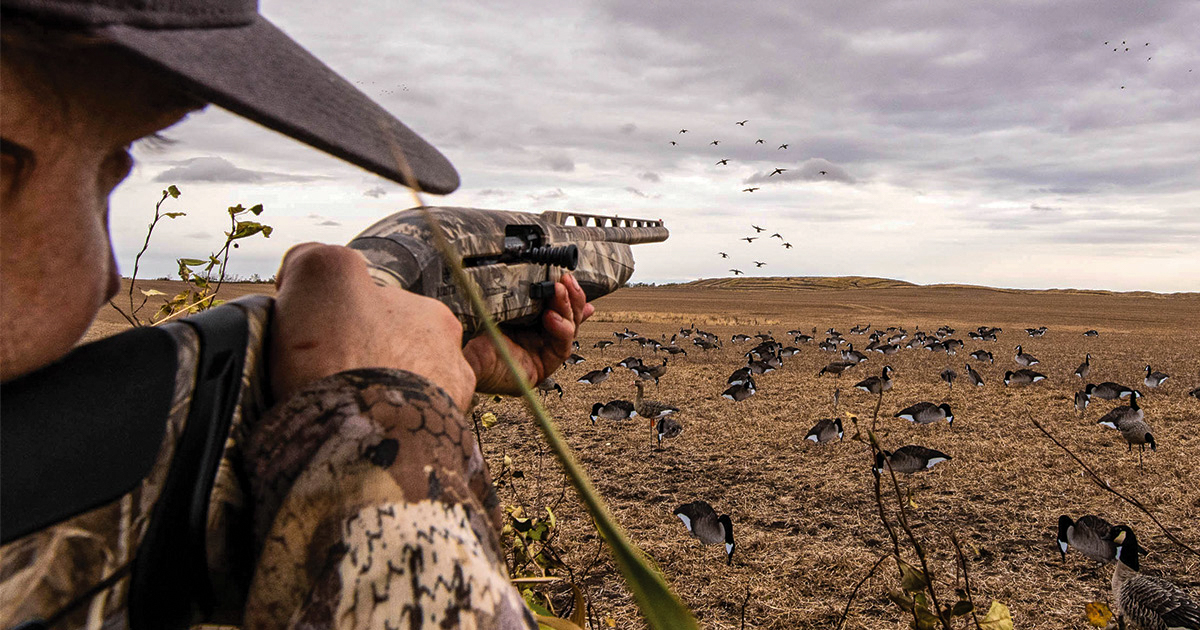Early-Season Destinations: Four Prairie Waterfowling Hotspots
Plan your next waterfowling adventure
Plan your next waterfowling adventure
.jpg)

The Prairie Pothole Region encompasses five US states, three Canadian Provinces and supports 50 to 70 percent of North America's waterfowl population during the breeding season. If you are looking for an early-season hunting destination, this is where the adventure begins. The following four cities serve as jumping-off points for top-notch freelance waterfowling trips. Find out when, where, and how to meet the migration this fall.
Located at the northern extreme of the Prairie Pothole Region, Saskatoon, Saskatchewan offers hunters the chance to target locally produced ducks and geese while also providing opportunities to decoy a wide variety of early-season migrants from the north.
Scouting is priority number one when hunting the prairies, and hunters will discover that the harvested grainfields and willow-lined wetlands west of Saskatoon attract a large number of mallards and pintails. This area that typically hosts large flocks of lesser Canada geese that migrate into the province on the season's first cool winds from the north.
Field hunting opportunities for greater Canada geese are especially strong north of Saskatoon, while hunters can go south, east, or west when looking to decoy the massive numbers of snow geese that migrate into the area by early October.
Hunting pressure in the region around Saskatoon can be high, making access to private land a challenge at times, but the area also boasts a number of Ducks Unlimited projects, which are open to the public for hunting.
For local hunting regulations and other information, visit Environment Canada Saskatchewan.
An abundance of water and public hunting opportunities make the Devils Lake region in northeast North Dakota a top early-season destination for waterfowl and waterfowl hunters. Hunting prospects in late September and early October are powered by local duck production, which can include large numbers of mallards and other puddle ducks. While targeting mallards in fields of harvested small grains is a popular option, those opportunities may be limited in the first weeks of the season. Waders, floating decoys, and even a small boat or canoe are considered early-season staples.
Increasing water levels over the past two decades have impacted some of the top diving duck staging areas in the Devils Lake region, but it still pays to bring along a decoy spread that you can use to take advantage of the strong flight of canvasbacks and redheads. And if your timing is right, you can also hit a major push of bluebills that typically arrives in mid-October.
Don't forget to throw in a fishing rod, too, as the fall action for walleye and large schools of yellow perch on the 200,000+ acre Devils Lake can be world-class.
For more information and to locate public hunting opportunities, visit North Dakota Game and Fish Department.
Located roughly halfway between Fargo and Bismarck on Interstate 94, Jamestown is an ideal launching pad for the hunter wanting to take advantage of the abundance of water and large waterfowl populations typically found in the southeastern and south-central portions of the state.
A variety of duck species are likely to wing their way through the decoys on an early-season hunt near Jamestown, including the speeding flocks of blue-winged teal that hang around until the first real cold snap of the season sends them packing for warmer climes. Blue-winged teal tend to congregate in large numbers on shallow, weedy bodies of water, where the small birds love to feed and build fat stores before they migrate south.
Expanded bag limits on resident Canada geese typically come to an end by mid-September, but opportunities to hunt the large birds exist throughout the season. Fields of harvested small grains and corn chopped for silage are the top choices for decoying Canada geese during the opening weeks of the regular season, and it is not uncommon to be able to target mallards as well in these dry-field situations.
For more information and to locate public hunting opportunities, visit North Dakota Game and Fish Department.
Prairie pioneer Laura Ingalls Wilder helped put De Smet, South Dakota, on the map, but this "little town on the prairie" also owns the distinction of lying in the middle of the best early-season waterfowl action in the Rushmore State. A wide variety of hunting situations is the ultimate attraction for some freelance waterfowlers, making this a prime starting location.
A waterfowl hunter based in De Smet will likely discover many different options for a morning hunt, based solely on which direction from town he or she decides to scout the evening before.
The large wetlands and lakes to the north, east, and south can hold significant numbers of locally produced ducks and geese early in the season—birds that can be targeted on the water or in fields of harvested small grains, soybeans, and silage.
The smaller prairie potholes to the south and west will roost ducks and geese that can be decoyed in dry-field situations, or a hunter can put together a classic day in the marsh. Many of these small wetlands produce fantastic diving duck hunts, making a handful of diver duck decoys a must-have for this area.
During the early weeks of the season near De Smet, the average morning's game strap may contain mallards, gadwalls, pintails, blue-winged teal, wood ducks, and the occasional redhead or other diving duck. And when the third Saturday in October rolls around, a hunter can spend the afternoons chasing wily pheasants before scouting for the next morning's waterfowl hunt.
For local hunting regulations and public hunting opportunities, visit South Dakota Game, Fish, and Parks.